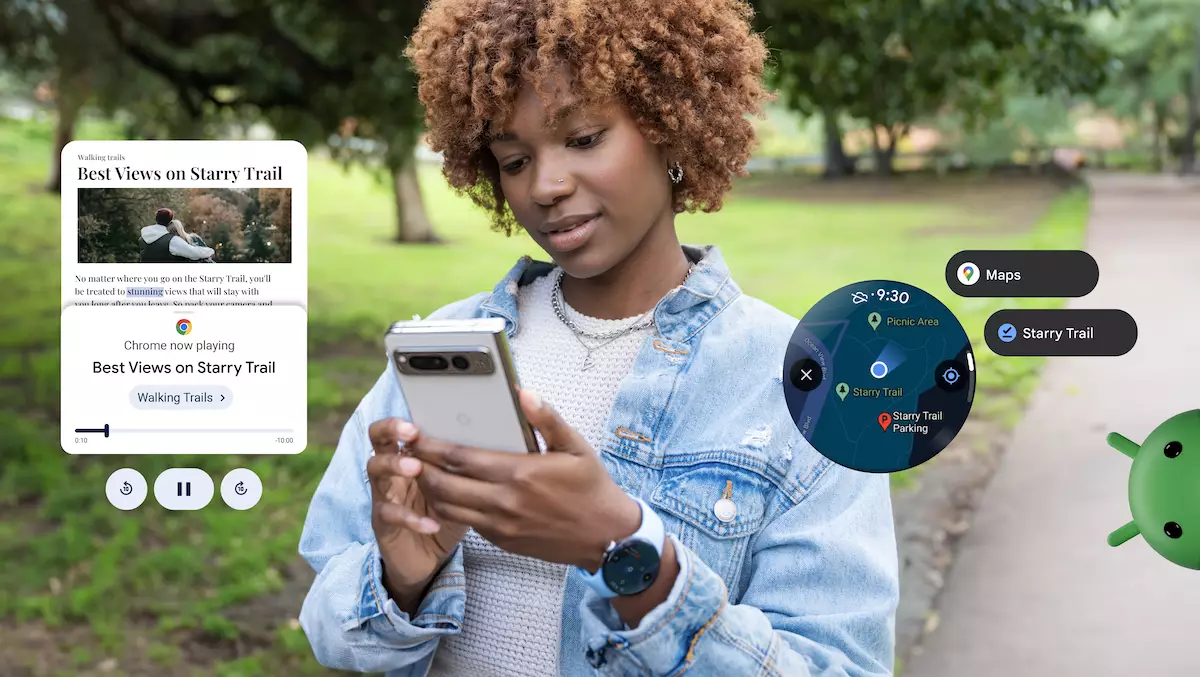Android recently announced five updates to its mobile operating system, aimed at improving accessibility for all users. One of the most prominent features is “TalkBack,” Google’s version of a screen reader designed to assist individuals who are blind or have low vision. Powered by Gemini Nano, Google’s large-language-model-based platform, TalkBack provides detailed audio descriptions of digital images. This new feature allows users to hear descriptions of images in online products, camera roll photos, and text messages, enhancing their overall experience.
Listen to This Page
Another notable accessibility feature introduced by Android is “Listen to this page” in the Chrome browser. This feature enables users to listen to webpages, including blog posts, news articles, and recipes, catering to individuals with visual impairments or learning disabilities. Users have the flexibility to pause, rewind, and fast forward the audio, as well as adjust listening speed, language, and voice preference. With support for multiple languages such as English, French, German, Arabic, Hindi, and Spanish, this feature enhances the overall accessibility of web content for Android users.
Android’s “Circle to Search” feature now includes the ability to look up songs with a new music button, eliminating the need for third-party apps like Shazam. By making gestures like circling, highlighting, scribbling, or tapping, users can search for songs from anywhere on their phone. This feature can identify songs playing on the device or in the background from nearby speakers, providing users with the track name, artist information, and access to music videos via the YouTube app. The convenience of searching for songs seamlessly adds value to the user experience.
Earthquake Alert System Expansion
Expanding its earthquake alert system, Android is now providing alerts to all U.S. states and its six territories. Initially launched in California in 2020, this feature uses smartphone sensors to detect tremors and help people prepare for natural disasters and emergencies. For earthquakes of a magnitude of 4.5 or higher, Android sends out warning alerts indicating the intensity of shaking and urging users to take immediate action if necessary. This proactive approach to alerting users about potential seismic activity can help save lives and minimize damage.
Android has also introduced offline maps for smartwatch users, allowing them to navigate without relying on their phones. This capability is particularly useful in situations where users leave their phones behind, get lost, or face limited cell phone service. By integrating Google Maps on smartwatches, Android ensures that users can access essential navigation features even in challenging circumstances. This feature adds an extra layer of convenience and reliability to the Android ecosystem.
Overall, Android’s latest updates demonstrate a commitment to enhancing accessibility, convenience, and safety for all users. By incorporating innovative features like TalkBack, “Listen to this page,” Circle to Search music, an expanded earthquake alert system, and offline maps for smartwatches, Android continues to push boundaries in providing a seamless and user-friendly experience for its diverse user base.


Leave a Reply